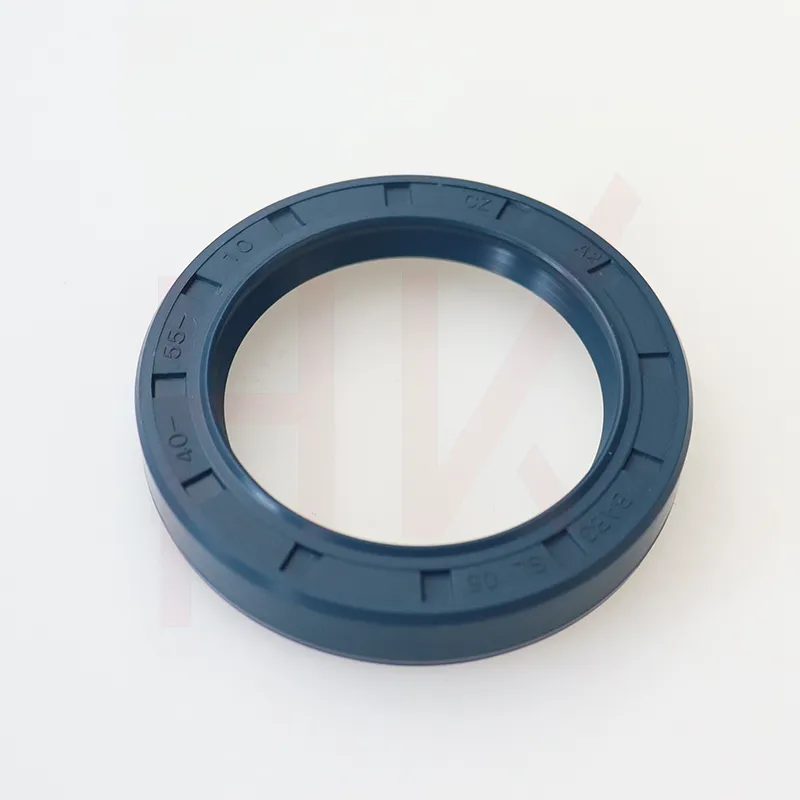ഡിസം . 03, 2024 18:17 Back to list
Effective Dust Seal Solutions for Hydraulic Cylinders in Various Applications
Understanding Hydraulic Cylinder Dust Seals Their Importance and Functionality
Hydraulic cylinders are crucial components in various industrial applications, providing the necessary force and movement required to operate machinery effectively. However, the efficiency of these cylinders can be compromised by external contaminants such as dust, dirt, and moisture. This is where hydraulic cylinder dust seals come into play. In this article, we will delve into the significance, functionality, and maintenance of hydraulic cylinder dust seals.
The Importance of Dust Seals
Hydraulic cylinder dust seals are essential for protecting the cylinder from external debris that can cause wear, corrosion, and potential failure. These seals act as a barrier, preventing contaminants from entering the cylinder and compromising the hydraulic fluid's integrity. When dust and particles infiltrate a hydraulic system, they can lead to increased friction, overheating, and ultimately, failure of the cylinder, resulting in costly downtime and repairs.
Moreover, maintaining the quality of hydraulic fluid is paramount. Contaminated fluid can cause damage to internal components, leading to inefficient operation and a shorter lifespan for the hydraulic cylinder. Therefore, investing in high-quality dust seals is crucial for enhancing the reliability and durability of hydraulic systems.
Functionality of Hydraulic Cylinder Dust Seals
Dust seals are designed to work in conjunction with other sealing components, such as rod seals and end seals. Their primary function is to prevent dust and debris from contacting the moving surfaces of the hydraulic cylinder. Typically, dust seals are manufactured using materials like polyurethane or rubber, which offer excellent resilience and wear resistance.
The design of dust seals can vary, with some featuring a lip that faces outward to deflect debris away from the cylinder. This design is vital for ensuring that any particles that do approach the seal are redirected rather than allowed to penetrate the cylinder.
In addition to deflecting contaminants, dust seals also play a role in retaining lubrication. Proper lubrication is essential for the smooth operation of hydraulic cylinders. The dust seal ensures that the lubricating oil does not leak out while keeping dust from entering. This dual functionality is what makes dust seals an integral part of the hydraulic system.
hydraulic cylinder dust seal

Maintenance of Dust Seals
Regular maintenance of hydraulic cylinder dust seals is necessary to ensure their longevity and effectiveness. Here are a few key maintenance practices to consider
1. Regular Inspections It’s important to inspect dust seals regularly for signs of wear, cracking, or deformation. Early detection of any issues can prevent more severe damage to the hydraulic cylinder.
2. Cleaning Keeping the area around the hydraulic cylinder clean is essential. Regularly wipe the exposed areas of the seal to remove dust and debris that may have accumulated, thus preventing these particles from entering the cylinder.
3. Lubrication Applying the appropriate lubricant according to the manufacturer’s specifications can enhance the performance of dust seals and ensure they function correctly over time.
4. Replacement Dust seals do have a finite lifespan, and replacing them when necessary is vital. Signs that a dust seal may need replacement include frequent leakage, visible wear, or a noticeable reduction in performance.
5. Compatibility Checks When replacing dust seals, it is essential to choose seals that are compatible with the specific hydraulic fluid and operating conditions of the cylinder to ensure optimal performance.
Conclusion
In the realm of hydraulic systems, dust seals may seem like small components, but their role is undeniably significant. They protect hydraulic cylinders from external contaminants, help maintain the integrity of hydraulic fluid, and contribute to the overall efficiency of machinery. By understanding the importance of hydraulic cylinder dust seals and implementing proper maintenance practices, operators can extend the life of their hydraulic systems, reduce costs associated with repairs, and ensure the smooth operation of their equipment. Ultimately, investing in high-quality dust seals is not just a protective measure; it is a proactive step towards enhancing operational efficiency and sustainability in industrial applications.
-
The Trans-formative Journey of Wheel Hub Oil Seals
NewsJun.06,2025
-
Graphene-Enhanced Oil Seals: Revolutionizing High-Pressure Oil Sealing
NewsJun.06,2025
-
Future of Hydraulic Sealing: Advanced Intelligent TCN Oil Seals
NewsJun.06,2025
-
Don’t Let a Broken TCV Oil Seal Ruin Your Day
NewsJun.06,2025
-
Bio-Inspired Dust Seals for Better Sealing Performance
NewsJun.06,2025
-
Biodegradable and Sustainable Hydraulic Seal Materials
NewsJun.06,2025
-
Top Oil Seal Solutions for Your Industrial Needs
NewsMay.22,2025
Products categories
















